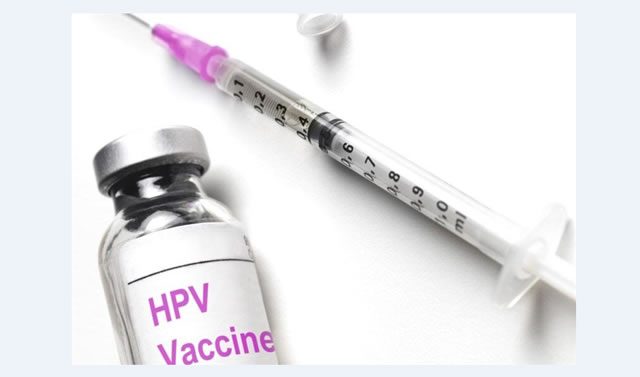By Asmau Ahmad
The World Health Organisation Strategic Advisory Group of Experts on Immunisation has said a single-dose Human Papillomavirus Vaccine can deliver solid protection against HPV, and that the jab is comparable to two-dose schedules.
According to the experts, this could be a game-changer for the prevention of the disease, especially seeing that more doses of the life-saving jab can reach more girls.
The Centres for Disease Control and Prevention described HPV as the virus that causes cervical cancer.
It explained that HPV is the most common sexually transmitted disease, adding that there were about 43 million HPV infections in 2018, among many young people in their late teens and early 20s.
“There are many different types of HPV. Some types can cause health problems, including genital warts and cancers. But there are vaccines that can stop these health problems from happening. HPV is a different virus than HIV and HSV (herpes).
“You can get HPV by having vaginal, anal, or oral sex with someone who has the virus. It is most commonly spread during vaginal or anal sex. It also spreads through close skin-to-skin touching during sex. A person with HPV can pass the infection to someone even when they have no signs or symptoms.
“If you are sexually active, you can get HPV, even if you have had sex with only one person. You also can develop symptoms years after having sex with someone who has the infection. This makes it hard to know when you first got it,” the CDC stated.
According to the WHO, “Often referred to as the ‘silent killer’ and almost entirely preventable, cervical cancer is a disease of inequity of access; the new SAGE recommendation is underpinned by concerns over the slow introduction of the HPV vaccine into immunisation programmes and overall low population coverage, especially in poorer countries.
“More than 95 per cent of cervical cancer is caused by sexually transmitted HPV, which is the fourth most common type of cancer in women globally with 90 per cent of these women living in low and middle-income countries.”
WHO disclosed that an estimated 604,000 new cases of cervical cancer was recorded in 2020, globally.
It stated that of the estimated 342,000 deaths from cervical cancer in 2020, about 90 of these occurred in low and middle-income countries.
SAGE Chair, Dr. Alejandro Cravioto said the HPV vaccine is highly effective for the prevention of HPV serotypes 16 & 18, which causes 70 per cent of cervical cancer.
He said, “SAGE urges all countries to introduce HPV vaccines and prioritise multi-age cohort catch up of missed and older cohorts of girls. These recommendations will enable more girls and women to be vaccinated and thus, prevent them from having cervical cancer and all its consequences over the course of their lifetimes.”
SAGE recommended one or two-dose schedule for girls aged nine to 14; one or two-dose schedule for young women aged 15-20 and two doses with a six-month interval for women older than 21.
He added that immunocompromised individuals, including those with HIV, should receive three doses if feasible, and if not, at least two doses, as there is limited evidence regarding the efficacy of a single dose in this group.
WHO Assistant Director-General, Dr. Princess Nothemba Simelela said, “I firmly believe the elimination of cervical cancer is possible. In 2020 the Cervical Cancer Elimination Initiative was launched to address several challenges including the inequity in vaccine access.
“This single-dose recommendation has the potential to take us faster to our goal of having 90 per cent of girls vaccinated at the age of 15 by 2030.
“We need political commitment to be complemented with equitable pathways for the accessibility of the HPV vaccine. Failure to do so is an injustice to the generation of girls and young women who may be at risk of cervical cancer.”
WHO said the option for a single dose of the vaccine is less costly, less resource intensive and easier to administer.




